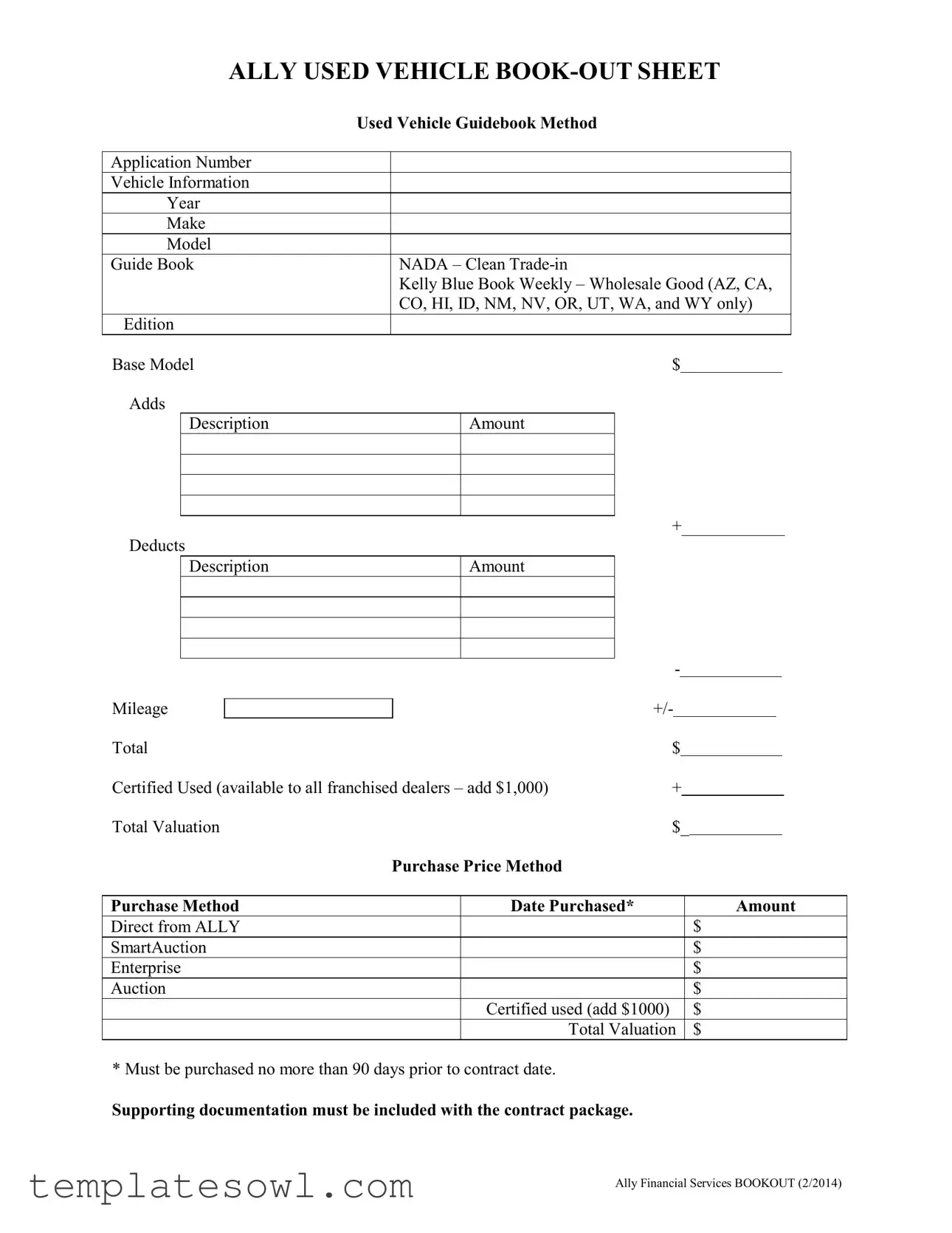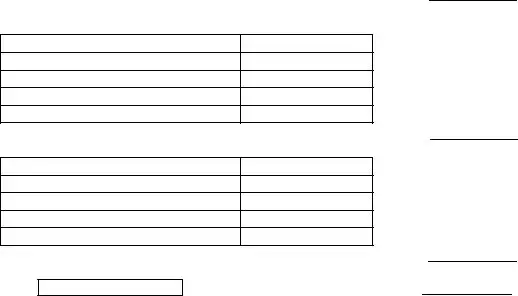What is the purpose of the Book Out Sheet form?
The Book Out Sheet form serves as a standardized method for dealerships to assess the value of used vehicles. It provides a structured format to input vehicle details, including year, make, and model, as well as valuation references from recognized guides like NADA and Kelley Blue Book. This helps dealers determine a fair price for the vehicle, ensuring they are competitive in the market while also protecting their interests.
Which valuation guides are referenced in the Book Out Sheet?
The form allows the use of multiple reputable appraisal guides, including NADA for clean trade-in values and Kelley Blue Book for wholesale valuations. Depending on the region, the sheet accommodates various conditions, allowing for adjustments based on the vehicle's state and specific additions or deductions. This multifaceted approach aids dealers in making informed decisions about inventory pricing.
What additional cost is associated with certified used vehicles?
If a dealership is offering certified used vehicles, an additional charge of $1,000 must be included in the total valuation. This adjustment reflects the enhanced quality and inspected status of certified vehicles, which often come with guarantees that can entice buyers.
Are there restrictions on the purchase date for vehicles recorded on the Book Out Sheet?
Yes, vehicles must be purchased within 90 days of the contract date to be included in this evaluation process. This restriction ensures that the data reflects the current market conditions and prevents outdated valuations from affecting sales. Supporting documentation must also accompany the contract package to validate the purchase details.
How should mileage be recorded on the Book Out Sheet?
Mileage should be recorded accurately, in the specified section of the form. This figure can have a significant impact on the total valuation, as lower mileage typically increases the value of the vehicle. Adjustments can be made in the form to reflect how the mileage affects the overall price.
What purchase methods can be used with this form?
Several purchase methods can be documented on the Book Out Sheet, including direct purchases from Ally, SmartAuction, Enterprise, or auctions. Each method listed may have different implications for pricing and valuation, and specifying the method helps maintain clarity in records and transactions.

